Oakbrook, Illinois Interior Trim
Welcome to ProMillwork, where craftsmanship meets sophistication in the heart of Chicagoland. As a premier interior trim company, we take pride in transforming living spaces into elegantly curated environments. Our commitment to excellence is reflected in every detail, from meticulously crafted hardwood baseboards and crown molding to timeless door and window casings.
Types of Oakbrook Interior Trim
Interior trim styles can vary based on design trends, architectural influences, and regional preferences.
In the Midwest, where a blend of traditional and modern aesthetics often coexists, several types of interior trim are popular. Keep in mind that preferences may change over time, and individual choices can vary.
At ProMillworks, we focus on these main types of Oakbrook interior trim:
Door Casing
Door casing refers to the decorative molding or trim that surrounds a door, serving both functional and aesthetic purposes. This architectural element is typically installed on the interior sides of door frames and is designed to conceal the joint between the wall surface and the door jamb. Door casing comes in various styles, ranging from simple and streamlined to more elaborate and ornate, depending on the desired aesthetic of the space.
Base Moulding
Base molding, also known as baseboard or skirting, is a trim element that serves both functional and aesthetic purposes in interior design. Typically installed at the junction of the wall and the floor, base molding adds a finishing touch to a room by concealing the joint and providing a transition between the vertical wall surface and the horizontal floor. Base moldings come in a variety of styles and profiles, ranging from simple and straightforward designs to more intricate and ornate patterns, allowing homeowners to choose a style that complements the overall aesthetic of the space.
Primed Boards
Primed boards refer to wooden boards that have been pre-coated with a layer of primer, a paint undercoat that enhances adhesion and promotes a smoother finish when the boards are painted. These boards are commonly used in construction and interior finishing projects, offering a convenient and time-saving solution for those who prefer a pre-primed surface. The primer applied to the boards creates a sealed and uniform base, helping to prevent the absorption of paint and ensuring that the final coat adheres evenly. This not only streamlines the painting process but also contributes to a more professional and polished look.
Interior Finish Boards
Interior finish boards encompass a variety of wooden boards and trim elements used to add the final touches to the interior of a space, contributing to both functionality and aesthetic appeal. These boards can include baseboards, crown molding, chair rails, and other decorative trim components. Often made from materials such as wood or MDF (medium-density fiberboard), interior finish boards serve to conceal joints, transitions, and edges in a room, providing a cohesive and polished look. They can be chosen in a range of profiles and styles, allowing homeowners and designers to customize the visual character of a space. Interior finish boards are commonly used around doors, windows, and along the junctions of walls and floors, creating a finished and harmonious appearance.
Hardwoods
Got Questions? We’re Here to Help. Fill Out the Form Below to Send Us a Message…
Need An Answer Fast? Call Us Now at (630) 264-2100
Directions to ProMillworks from Oakbrook, Illinois
The fastest way to get to ProMillwork from Oakbrook:- Get on I-88 from Jorie Blvd and W 22nd St
- Follow I-88 to IL-31 S/State Rte 31 S/S Lincolnway St in North Aurora. Take exit 117 from I-88
- Follow IL-31 S/State Rte 31 S to Albright Rd in Montgomery
Oakbrook Door Casing
Door casing, also known as door trim or door molding, is the decorative and functional molding that surrounds a door, covering the gap between the door frame and the adjacent wall. It serves both aesthetic and practical purposes, enhancing the overall appearance of the doorway while concealing any gaps or imperfections.
Here are some key points about Oakbrook door casing:
Materials:
There are several different materials that can be used for door casing, including wood, MDF, and Plastic (PVC).
Wood:
Traditional door casings are often made of wood, providing a classic and warm look. Wood casings can be plain or intricately designed with various profiles and details.
MDF (Medium Density Fiberboard):
MDF is a common alternative to wood. It’s a composite material made from wood fibers and resin, providing a smooth and uniform surface. MDF is often used for painted casings.
Plastic or PVC:
These materials are durable, moisture-resistant, and easy to maintain. They are often used in bathrooms and other high-moisture areas.
Profiles:
Door casings come in various profiles or shapes. Common profiles include:
Flat or Square:
A simple, straight profile without much detail.
Colonial:
Features a slightly rounded edge for a classic look.
Rustic or Craftsman:
Characterized by a more substantial and squared-off profile with detailed edges.
Ogee:
Has an S-shaped curve, adding a touch of elegance.
Installation:
Door casing is typically installed with nails or adhesive along the perimeter of the door frame. It may be further secured with finishing nails for stability.
The corners of the casing often meet at mitered joints for a seamless appearance.
Function:
In addition to its aesthetic role, door casing helps cover gaps and transitions between the door frame and the wall, providing a finished and polished look.
It can also help protect the edges of the wall and the door frame from damage.
Painting and Finishing:
Door casings are often painted or stained to match the overall interior design. This allows for customization and coordination with other trim elements in the space.
Matching Styles:
It’s common to choose door casing styles that complement the architectural style of the home. For example, Victorian homes might have more ornate casing, while modern homes may have sleek and simple profiles.
Door casing is an important element in interior design, contributing to the overall style and cohesion of a space. It’s available in various styles and materials, allowing homeowners to choose options that suit their preferences and the overall design aesthetic of their homes.
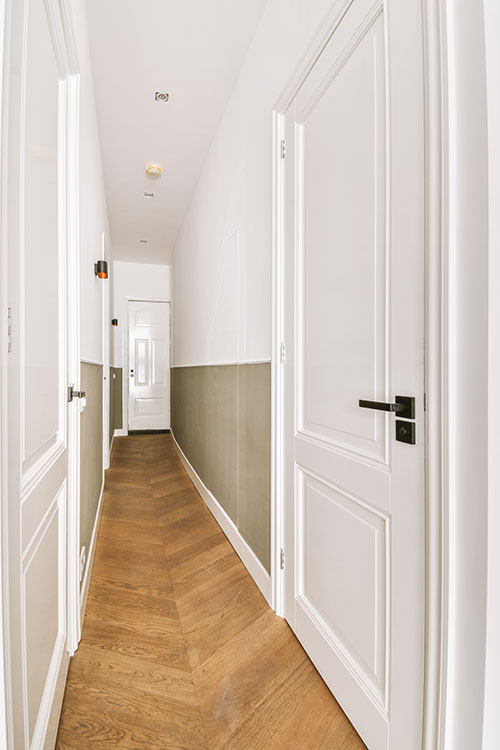
Oakbrook Base Molding
Base molding, also known as baseboard or skirting, is a type of trim that is installed at the bottom of a wall where it meets the floor.
Similar to door casing, base molding serves both aesthetic and functional purposes in interior design. Here are some key points about base molding:
Aesthetic Enhancement:
Base molding provides a finishing touch to a room, covering the joint between the wall and the floor. It enhances the overall appearance of the space and adds a decorative element.
Material Options:
Similar to door casing, base molding can be made from various materials, including:
Wood:
Common for a traditional and classic look.
MDF (Medium Density Fiberboard):
Provides a smooth surface and is often used for painted applications.
Plastic or PVC:
Durable, moisture-resistant, and easy to clean, making them suitable for areas with higher humidity.
Profiles and Styles:
Base molding comes in different profiles and styles to match the overall design theme of a room. Common profiles include:
Flat or Straight:
A simple, straight profile without much detail.
Colonial:
Features a slight curve or rounded edge.
Cove:
Has a concave profile, creating a gentle curve.
Ogee:
Characterized by an S-shaped curve, offering a more decorative look.
Height and Proportion:
The height of base molding can vary, and the choice often depends on factors like the ceiling height and the desired aesthetic. Taller base moldings can add a sense of elegance, while shorter ones may be more subtle.
Installation:
Base molding is typically installed along the base of the walls using nails, screws, or adhesive. It can be installed flush with the wall or extend slightly beyond for added visual interest.
Inside corners are often mitered for a clean and seamless appearance.
Protection and Concealment:
Base molding helps protect the bottom of the wall from damage caused by furniture, vacuum cleaners, and other potential sources of impact.
It also conceals the joint between the wall and the floor, covering any gaps or imperfections.
Painting and Finishing:
Base molding is often painted or stained to match the overall color scheme of the room. It can be coordinated with other trim elements, such as door casing and crown molding.
Versatility:
Base molding is versatile and can be used in various settings, including residential and commercial spaces. It is common in living rooms, bedrooms, hallways, and other interior areas.
Base molding in Oakbrook, Illinois is an essential element of interior design, providing a polished and cohesive look to a room while also serving practical purposes. The choice of material, profile, and installation style can be tailored to complement the overall design theme of a space.
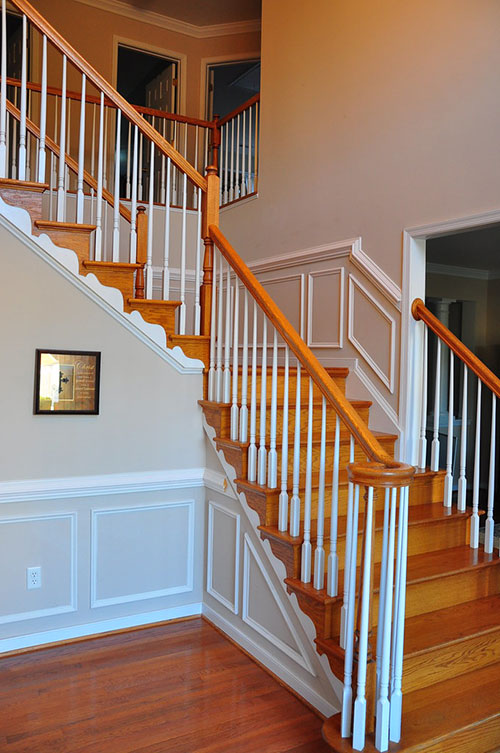
Contact Us Regarding Your Oakbrook Interior Trim Needs
Embark on a journey of transforming your living spaces with ProMillworks, your trusted partner for exquisite interior trim solutions in Oakbrook, Illinois. Our passion for craftsmanship and dedication to unparalleled design excellence set us apart as the go-to experts for all your interior trim needs. Whether you’re envisioning the timeless allure of crown molding, the classic charm of wainscoting, or any other personalized trim element, ProMillworks brings your vision to life. Elevate the aesthetics of your home with our tailored approach, ensuring every detail reflects your unique style. Don’t just dream it; let us craft it. Take the first step toward refined interiors by calling ProMillworks today. Our team of experts is ready to listen, advise, and turn your ideas into reality. Your dream home is just a call away—reach out now and experience the transformation.
Oakbrook Primed Boards
Primed boards, including primed MDF (Medium Density Fiberboard), primed finger-jointed pine (PFJ-Pine), and primed finger-jointed poplar (PFJ-Poplar), are types of building materials commonly used for trim work and other interior applications.
The term “primed” indicates that these boards come pre-coated with a primer, a preliminary layer of paint that prepares the surface for further finishing. Here’s some information about each type:
Primed MDF (Medium Density Fiberboard):
Material:
MDF is an engineered wood product made from wood fibers and resin, compressed into dense, stable sheets. It is known for its smooth surface and uniform density.
Priming:
Primed MDF comes with a factory-applied primer, which provides a smooth and even surface for painting.
Advantages:
MDF is less prone to warping or splitting compared to natural wood. The primed surface allows for easy painting and finishing.
Primed Finger-Jointed Pine (PFJ-Pine):
Material:
Finger-jointed pine is made by joining short sections of pine wood using finger joints. This process creates longer and more stable boards.
Priming:
PFJ-Pine comes pre-primed, simplifying the finishing process. The primer enhances paint adhesion and provides a consistent base for the final paint coat.
Advantages:
PFJ-Pine combines the natural beauty of pine with the stability provided by the finger-jointing process. The primed surface ensures a professional and durable finish.
Primed Finger-Jointed Poplar (PFJ-Poplar):
Material:
Finger-jointed poplar is similar to PFJ-Pine but is made from poplar wood. Poplar is known for its straight grain and light color.
Priming:
PFJ-Poplar is pre-primed, making it ready for painting. The primed surface helps achieve a consistent and high-quality finish.
Advantages:
Poplar is a hardwood that is easy to work with and has a fine, uniform texture. The finger-jointing process adds stability, and the primed surface simplifies the finishing process.
Primed Board Common Features:
Convenience:
The pre-primed feature of these boards saves time and effort during the finishing process, as the boards are ready for painting once installed.
Paint Adhesion:
The primed surface enhances the adhesion of the final paint coat, ensuring a smoother and more durable finish.
Versatility:
Primed boards are versatile and can be used for various interior applications, including baseboards, crown molding, door casing, and other trim work.
Consistency:
The factory-applied primer provides a consistent base, reducing the risk of uneven paint absorption and enhancing the overall aesthetic appeal.
When working with primed boards, it’s important to follow the manufacturer’s guidelines for painting and finishing to achieve the best results.
Proper preparation and attention to detail during installation and finishing will contribute to a polished and long-lasting appearance in your interior spaces.
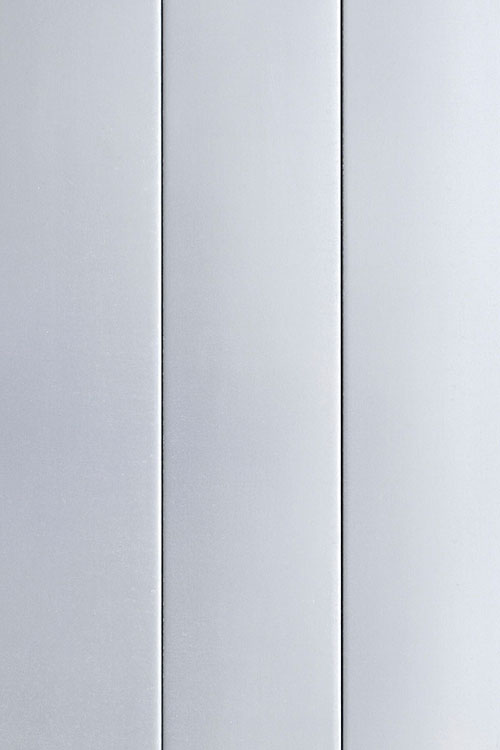
Oakbrook Interior Finish Boards
Interior finish boards refer to a variety of materials used for the final touches in the interior of a building. These boards serve both functional and aesthetic purposes, adding visual appeal while covering joints, transitions, and edges.
Here are some common types of interior finish boards:
Baseboards:
Purpose:
Baseboards, or base molding, cover the joint between the wall and the floor. They protect the bottom of the wall from damage, add a decorative element, and help create a finished look.
Materials:
Baseboards can be made of wood, MDF (Medium Density Fiberboard), PVC, or other materials. They come in various profiles and heights to suit different design preferences.
Crown Molding:
Purpose:
Crown molding, or cornice molding, is used at the junction of the wall and ceiling. It adds an elegant and decorative touch, visually enhancing the transition between the two surfaces.
Materials:
Crown molding is commonly made of wood, MDF, or polyurethane. It comes in different profiles and sizes, allowing for customization based on the architectural style.
Chair Rail:
Purpose:
Chair rail molding is typically installed horizontally on the wall at the height where chair backs might come into contact. It serves a protective function, preventing chairs from damaging the walls, and also adds a decorative element.
Materials:
Chair rails are available in various materials, including wood and MDF. They come in different styles and sizes to complement the overall design.
Wainscoting:
Purpose:
Wainscoting involves covering the lower portion of a wall with decorative paneling. It adds a classic and sophisticated look to interiors and also protects the wall from scuffs and dings.
Materials:
Wainscoting can be made from wood, MDF, or other materials. Beadboard and raised panel wainscoting are common styles.
Panel Molding:
Purpose:
Panel molding is used to create decorative wall panels or frames on the wall surface. It adds dimension and visual interest to plain walls.
Materials:
Panel molding is often made of wood or MDF. It comes in various designs and can be used to create intricate patterns on walls.
Window and Door Casings:
Purpose:
Casings are used to frame windows and doors, providing a finished look and covering gaps between the frame and the wall.
Materials:
Window and door casings can be made from wood, MDF, or other materials. They come in different profiles and styles to match the overall design theme.
Picture Rails:
Purpose:
Picture rails are installed near the top of the wall to hang pictures or artwork without the need for nails in the wall itself. They add a decorative and functional element.
Materials:
Picture rails can be made of wood or other materials and come in various profiles.
Quarter Round:
Purpose:
Quarter round molding is used to cover gaps between baseboards and the floor. It provides a seamless transition and adds a finishing touch.
Materials:
Quarter round molding is typically made of wood, MDF, or PVC.
These Oakbrook interior finish boards come in various materials, styles, and profiles, allowing for customization to match the overall design theme of a space.
Whether you’re aiming for a classic, modern, or eclectic look, choosing the right Oakbrook finish boards can significantly enhance the visual appeal of your interior.
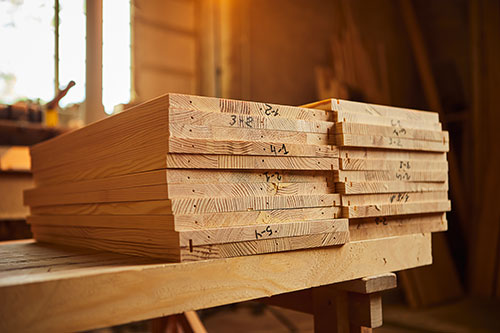
Oakbrook Hardwoods
Hardwoods are a type of wood that comes from deciduous trees, which are characterized by broad leaves that typically fall off in the autumn. Hardwood is renowned for its durability, strength, and attractive grain patterns.
Common hardwood species used for interior trim include oak, maple, cherry, walnut, and mahogany.
Here are some considerations for using hardwoods in terms of interior trim:
Baseboards and Crown Molding:
Hardwoods are frequently used for baseboards and crown molding due to their ability to withstand wear and tear while providing an elegant finish to a room. Oak and maple are popular choices for these applications.
Hardwood baseboards and crown molding are popular choices for interior trim, offering a classic and elegant finish to a room. Here’s a closer look at each:
Hardwood Baseboards:
Material Choices:
Hardwood baseboards are typically crafted from durable and attractive hardwood species such as oak, maple, cherry, or walnut. The choice of wood can impact the overall aesthetic of the space.
Durability:
Hardwood baseboards are known for their durability and resistance to wear and tear. This makes them well-suited for high-traffic areas where they may be subjected to impacts and scuffs.
Design Options:
Hardwood baseboards come in various designs and profiles, allowing homeowners to choose a style that complements the overall interior design. Common profiles include simple and clean lines as well as more intricate designs.
Finish Options:
Hardwoods can be stained or finished in different ways to match the color scheme of the room. The natural grain of hardwoods adds visual interest, and the finish can range from clear varnish to darker stains.
Installation:
Installing hardwood baseboards may require skilled carpentry to ensure a precise fit. The baseboards are typically attached to the wall at the floor level and can be used to cover the joint between the wall and the floor.
Hardwood Crown Molding:
Elegance and Sophistication:
Crown molding, especially when crafted from hardwoods, adds an element of elegance and sophistication to a room. It is often used at the junction of walls and ceilings to create a visually appealing transition.
Hardwood Species:
Similar to baseboards, hardwood crown molding can be made from various hardwood species. The choice of wood influences the final look, and different woods may be selected based on color, grain pattern, and overall design goals.
Architectural Detailing:
Hardwood crown molding allows for architectural detailing, including intricate patterns and decorative elements. This detailing can enhance the character of a room and contribute to a more polished appearance.
Versatility:
Crown molding comes in different sizes and profiles, offering versatility in design. Homeowners can choose a style that complements the overall architecture and design theme of their home.
Installation:
Installing hardwood crown molding may require skill and precision due to the molding’s position at the top of walls. Proper cutting and joining techniques are crucial for achieving seamless corners and a professional finish.
Both hardwood baseboards and crown molding contribute to the overall aesthetic appeal of a room. They can be used in combination to create a cohesive and visually pleasing design throughout a home. The choice of hardwood species, design, and finish should align with the homeowner’s preferences and the overall style of the space.
Door and Window Casings:
Hardwoods are well-suited for door and window casings, offering a refined and timeless look. The hardness of these woods helps prevent dents and damage in high-traffic areas. Cherry and walnut are often used for a rich, warm appearance.
Material Choices:
Hardwood door and window molding is typically crafted from durable hardwoods such as oak, maple, cherry, walnut, or mahogany. The selection of wood species can influence the molding’s appearance and characteristics.
Design Varieties:
Hardwood molding for doors and windows comes in various designs and profiles, allowing homeowners to choose styles that complement the overall interior design. Common profiles include casing, trim, and sills.
Durability:
Hardwoods are known for their durability, making them well-suited for areas around doors and windows that may be subject to wear, impacts, or exposure to sunlight. The hardness of the wood helps resist dents and damage.
Finish Options:
Hardwood door and window molding can be finished in different ways to achieve the desired look. This includes staining to enhance the natural color of the wood, clear varnish for a glossy finish, or painted finishes to match the interior color scheme.
Architectural Detailing:
Hardwood molding allows for architectural detailing, and homeowners can choose from various patterns and decorative elements to add character to door and window surrounds. This detailing can range from simple and clean lines to more intricate designs.
Installation:
Installing hardwood door and window molding may require skilled carpentry to ensure a precise fit. The molding is typically applied around the perimeter of doors and windows to frame and finish the openings.
Customization:
Hardwood molding can be customized to meet specific design preferences. Custom profiles and sizes can be crafted to suit the architectural style of the home and the homeowner’s vision for interior decor.
Wainscoting and Paneling:
Hardwoods can be employed in wainscoting and paneling to enhance the visual appeal of walls. The fine grain of hardwoods contributes to a polished appearance, making spaces feel more luxurious. Mahogany and cherry are commonly chosen for this purpose.
Hardwood wainscoting and paneling are interior design elements that enhance the visual appeal of walls, adding character, warmth, and texture to a space. Here’s an overview of hardwood wainscoting and paneling:
Hardwood Wainscoting:
Wainscoting refers to the application of wooden paneling to the lower part of a wall, typically covering the area between the baseboard and chair rail. It serves both functional and decorative purposes.
Material Choices:
Hardwood wainscoting is crafted from durable and attractive hardwoods, such as oak, maple, cherry, mahogany, or walnut. The choice of wood can impact the overall aesthetic and character of the room.
Design Options:
Hardwood wainscoting comes in various designs, from simple beadboard patterns to more elaborate raised panel styles. Homeowners can choose a design that complements the architectural style of the home and their personal taste.
Height and Coverage:
The height of the wainscoting can vary, but it typically covers the lower third or half of the wall. The design and height are often chosen based on the room’s proportions and the desired visual impact.
Functionality:
Wainscoting serves practical purposes, such as protecting walls from scuffs and damage in high-traffic areas. It also adds a layer of insulation and can be used to conceal imperfections in the wall.
Finish Options:
Hardwood wainscoting can be finished in various ways, including staining to highlight the natural grain of the wood, clear varnish for a glossy finish, or painted finishes to match the overall color scheme of the room.
Hardwood Paneling:
Hardwood paneling involves covering entire walls with wooden panels. This can create a rich and luxurious look, and it’s often used to add warmth and sophistication to rooms.
Material Choices:
Similar to wainscoting, hardwood paneling is crafted from durable hardwoods like oak, maple, cherry, mahogany, or walnut. The choice of wood influences the overall aesthetic of the room.
Design Versatility:
Hardwood paneling offers versatility in design. It can be applied vertically or horizontally, and the panel sizes and patterns can vary, allowing homeowners to achieve a range of looks from traditional to contemporary.
Application Areas:
Hardwood paneling is often used in various areas of a home, including living rooms, dining rooms, and bedrooms. It can cover an entire wall or be applied to accentuate specific architectural features.
Finish Options:
Like wainscoting, hardwood paneling can be finished in different ways to achieve the desired look. Staining, varnishing, or painting are common finish options, depending on the homeowner’s preferences.
When incorporating hardwood wainscoting or paneling into a space, it’s important to consider the overall design scheme, the architectural style of the home, and the desired level of formality. These hardwood elements can significantly contribute to the aesthetics of a room, creating a sense of warmth and sophistication. Professional installation is recommended to ensure a precise fit and a polished finish.
Chair Rails:
Hardwood chair rails are decorative and functional elements installed horizontally along the wall at a height that typically corresponds to the backrest of a chair. They serve both aesthetic and practical purposes in interior design. Here’s an overview of hardwood chair rails:
Material Choices:
Hardwood chair rails are crafted from durable and visually appealing hardwoods, such as oak, maple, cherry, mahogany, or walnut. The choice of wood can influence the overall style and character of the space.
Design and Profile:
Chair rails come in various designs and profiles, ranging from simple and clean lines to more intricate and detailed patterns. The design can be chosen to complement the overall design theme of the room.
Height and Placement:
Chair rails are typically installed at a height that protects the wall from the backs of chairs, preventing damage to the lower portion of the wall. The standard height is often around 32 to 36 inches from the floor, but this can vary based on personal preference and the room’s proportions.
Aesthetic Function:
Chair rails add visual interest to a room by breaking up large wall surfaces and creating a sense of division between the upper and lower portions of the wall. This feature can contribute to a more polished and finished look.
Protective Function:
One of the primary functions of chair rails is to protect walls from scuffs, dents, and damage caused by chair backs or other furniture. They act as a buffer between the furniture and the wall surface.
Versatility in Style:
Hardwood chair rails can be used in various design styles, from traditional to contemporary. The choice of wood species, finish, and design profile can be tailored to suit the overall aesthetics of the room.
Finish Options:
Chair rails can be finished in different ways to achieve the desired look. This may include staining to enhance the natural beauty of the wood, clear varnish for a glossy finish, or painting to match the color scheme of the room.
Installation:
Installing hardwood chair rails requires precision and skill to achieve a seamless and professional finish. Proper measurements, level installation, and attention to detail are essential to ensure the chair rails enhance the overall design of the space.
Hardwood chair rails are often used in dining rooms, hallways, and other areas where furniture may come into contact with the walls. They offer a practical solution for protecting the walls while simultaneously contributing to the room’s design and style. As with other hardwood elements, professional installation is recommended for the best results.
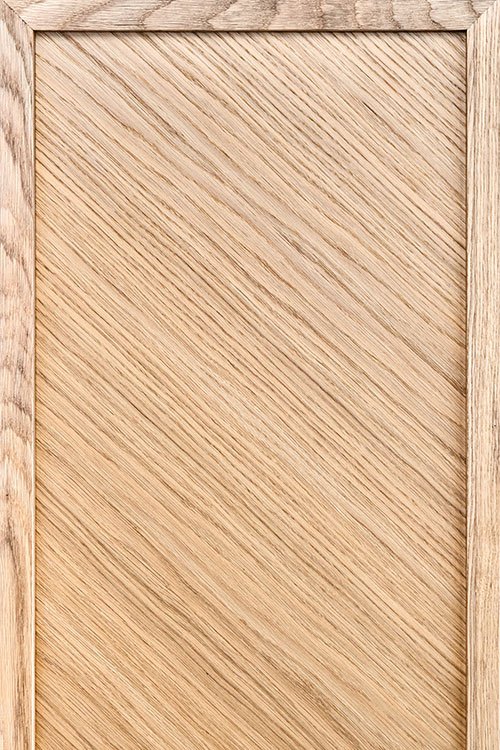
About Oakbrook, Illinois
Oak Brook is a suburb located in DuPage County, Illinois, United States. It is approximately 19 miles west of downtown Chicago and is known for its upscale residential neighborhoods, corporate headquarters, and shopping destinations. Here are some key aspects about Oak Brook: 1. Corporate Presence: Oak Brook is home to numerous corporate headquarters and business offices, making it a significant economic hub in the Chicago metropolitan area. Companies such as McDonald’s Corporation, Ace Hardware, and Blistex have their headquarters in Oak Brook. 2. Shopping and Dining: The village boasts several upscale shopping centers and dining establishments, including the Oakbrook Center. This premier shopping destination features a wide array of stores, ranging from luxury brands to popular retailers, as well as restaurants and entertainment options. 3. Oak Brook Park District: Residents and visitors can enjoy various recreational activities offered by the Oak Brook Park District. Facilities include parks, golf courses, fitness centers, swimming pools, and sports fields, providing opportunities for outdoor recreation and leisure activities. 4. Cultural Attractions: Oak Brook is home to cultural attractions such as the Mayslake Peabody Estate, a historic mansion surrounded by scenic grounds that host various events, performances, and educational programs. Additionally, the Oak Brook Public Library offers resources, programs, and services for residents of all ages. 5. Education: The village is served by several highly regarded public and private schools, providing quality education options for students in the area. Additionally, Oak Brook is in close proximity to prestigious universities and colleges in the greater Chicago area. 6. Transportation: Oak Brook enjoys convenient access to major transportation routes, including Interstate 88 and Interstate 294, facilitating travel to and from the village. Additionally, O’Hare International Airport and Midway International Airport are both within a reasonable driving distance. Overall, Oak Brook offers a blend of residential charm, corporate sophistication, recreational opportunities, and cultural amenities, making it an attractive place to live, work, and visit in the Chicago suburbs.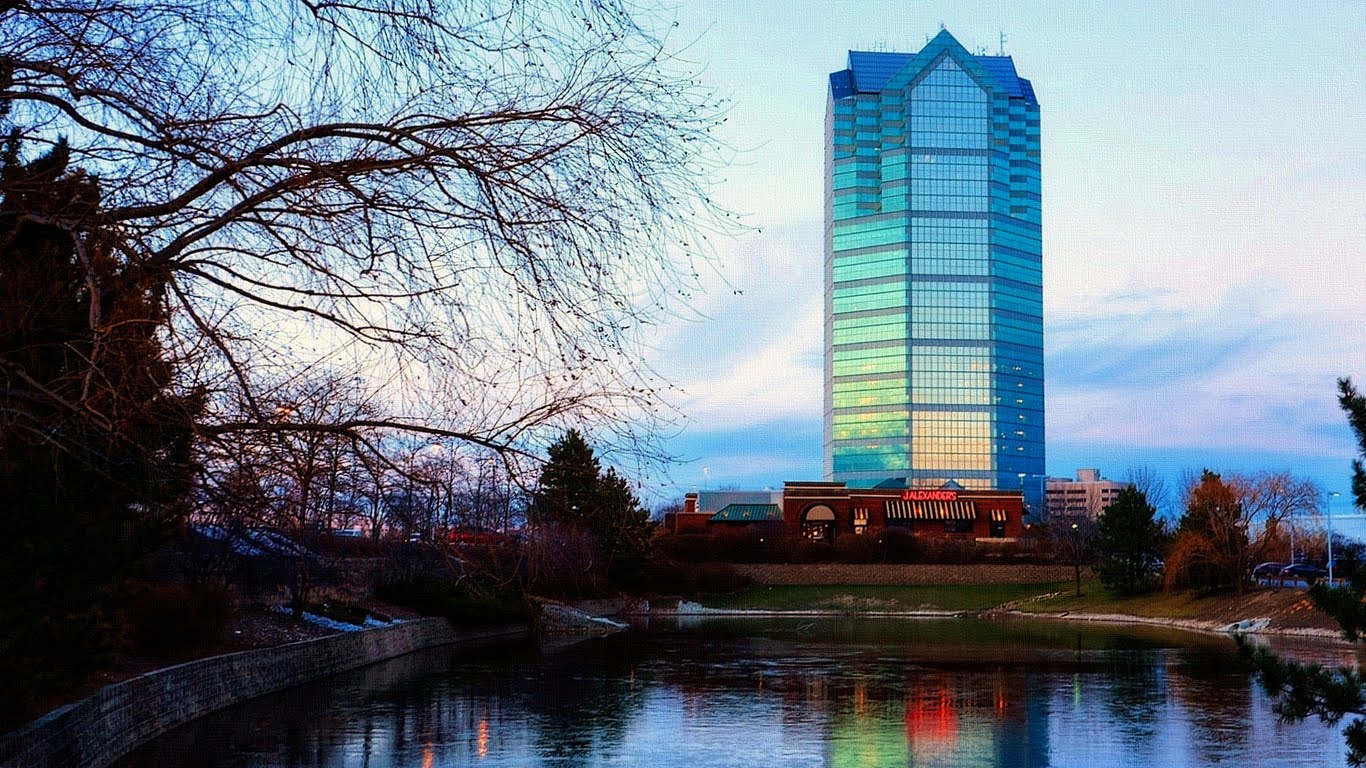
Oakbrook, IL Demographics
Oak Brook, Illinois, has a population of approximately 8,000 residents. The village is known for its affluent community, with a median household income significantly higher than the national average. Oak Brook boasts a well-educated population, with a high percentage of residents holding bachelor’s degrees or higher. The racial makeup of Oak Brook is predominantly White, with a smaller percentage of Asian and Hispanic residents. The village has a diverse age distribution, with a mix of families, working professionals, and retirees. Oak Brook offers a high standard of living, with upscale residential neighborhoods, excellent schools, and access to amenities such as shopping centers, parks, and cultural attractions.Oakbrook, Illinois FAQ
What are some popular attractions in Oak Brook?
What are the dining options like in Oak Brook?
Is Oak Brook a safe place to live?
What transportation options are available in Oak Brook?


